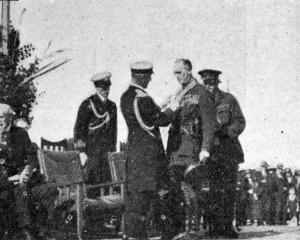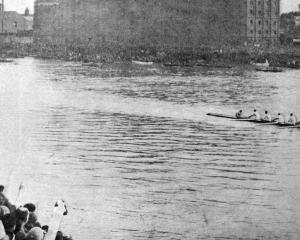The publication contains a great deal of valuable matter outlining briefly and lucidly the commencement and progress of the trading concerns now under the control of the City Council, and also many interesting particulars relating to the personnel of our City Council in the early days, and to past occupants of the mayoral chair.
The book opens with an instructive sketch of the appearance of Dunedin in the early sixties, followed by some particulars of the first municipal corporate body, the Dunedin Town Board, brought into being in 1855 by the Provincial Parliament, and abolished in 1865 to give place to the more important body which has since controlled municipal affairs.
Many important events transpired during the first 10 years of the existence of the new body, and these have been set out very clearly and intelligibly, the exact dates of the various events mentioned being given in each case.
The period from 1875 to 1915 has been divided into four decades, and under the heading of each has been compressed a wealth of information in regard to the life of the city and the progress of its institutions, which makes extremely interesting reading.
There follows a list of the Mayors of the city, town clerks, and members of the various governing bodies from the foundation of the city to the present time.
Brief sketches are included outlining the formation and progress of the Otago Harbour Board and the Dunedin Drainage Board.
• The annual report on the mental hospitals of the dominion from the year 1914, presented to the House of Representatives yesterday, states that the number of patients on the mental hospital register at the end of the year was 4111 - an increase of 76 males and 71 females during the 12 months.
The average number resident in institutions during the year was 4950.
The proportion of mental defectives to the whole population, including Maoris, was 1 in 279.
Dealing with the causes of insanity in New Zealand the reports states: ''Heredity is acknowledged to contribute a fair proportion - about 19 per cent - of the known causes, though an absurdly low estimate. The total incidence assigned to the toxic effect of alcohol and venereal disease is 21.7 and 9.6 per cent respectively among males after the deduction of cases in which there is no known cause. With respect to heredity, we may try to practise self-deceit and lull the conscience by laying the blame on the past generation, but what is to be said of alcoholism and venereal disease? Now perhaps, as never before, these social questions, always deserving of serious consideration, become clamant for action. The gaps in our volunteer army are being filled by the best of our sons, and it behoves us who are left behind to do what we can to make the nation of the future worthy of the sacrifice.''
• Among those who sent samples of wheat to the Panama Exhibition through the Agricultural Department were Messrs Wm. Kingan and Chas.
Poole. Mr Kingan has received intimation from the department that he has been awarded a silver medal and Mr Poole that he has won a bronze medal (states the Oamaru Mail).
Both samples were velvet wheat, Mr Kingan's sample having been grown at Maungawera, near Hawea Flat, and Mr Poole's at Awamoa. - ODT, 21.8.1915
• COPIES OF PICTURE AVAILABLE FROM ODT FRONT OFFICE, LOWER STUART ST, OR WWW.OTAGOIMAGES.CO.NZ












